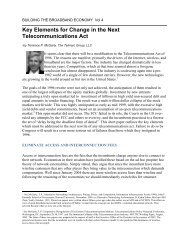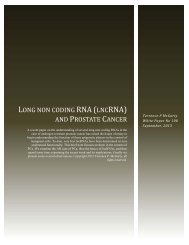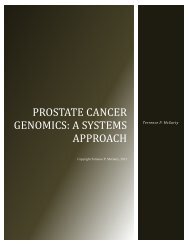progressivism, individualism, and the public ... - Telmarc Group
progressivism, individualism, and the public ... - Telmarc Group
progressivism, individualism, and the public ... - Telmarc Group
You also want an ePaper? Increase the reach of your titles
YUMPU automatically turns print PDFs into web optimized ePapers that Google loves.
The <strong>Telmarc</strong> <strong>Group</strong><br />
PROGRESSIVISM, INDIVIDUALISM, AND THE PUBLIC<br />
INTELLECTUAL<br />
7.2.1 The 1920 New York Platform<br />
We will use <strong>the</strong> 1930 Socialist Party Platform as a stepping off point for a discussion for<br />
several reasons. First it was at <strong>the</strong> most mature point of <strong>the</strong> Party, second it was still<br />
while Debs was imprisoned, third it is readily accessible on line <strong>and</strong> fourth my<br />
gr<strong>and</strong>mo<strong>the</strong>r was part of <strong>the</strong> process.<br />
The Socialist Party of New York met in 1920 to select a slate for <strong>the</strong> State offices 198 . It<br />
was at this meeting that Hattie Kruger was nominated as Party c<strong>and</strong>idate for New York<br />
State Treasurer.<br />
The platform of <strong>the</strong> Part at that time included <strong>the</strong> following 199 :<br />
"1. Laws which empower municipalities to acquire l<strong>and</strong>, construct dwellings, <strong>and</strong> rent<br />
<strong>the</strong>m at rates adequate for upkeep <strong>and</strong> replacement but with no profit to eliminate <strong>the</strong><br />
current housing shortage.<br />
2. Establish a comprehensive system by which <strong>the</strong> State in conjunction with <strong>the</strong><br />
municipalities can co-operative societies shall deal on a large scale in food <strong>and</strong> o<strong>the</strong>r<br />
necessities of life, buying directly from <strong>the</strong> producers <strong>and</strong> selling directly to <strong>the</strong><br />
consumers at cost, thus eliminating <strong>the</strong> capitalist middlemen, stimulating production <strong>and</strong><br />
diminishing <strong>the</strong> cost of living.<br />
3. The rapid extension of State <strong>and</strong> municipal ownership <strong>and</strong> operation of transportation<br />
<strong>and</strong> storage plants of lighting <strong>and</strong> o<strong>the</strong>r so called <strong>public</strong> utilities <strong>and</strong> of industrial<br />
establishments beginning with those which are already most largely monopolized <strong>and</strong><br />
those which have to do with <strong>the</strong> production of <strong>the</strong> prime necessities of life.<br />
4. The conservation by <strong>the</strong> States of <strong>the</strong> forests, mineral deposits <strong>and</strong> sources of water<br />
power which it still owns, <strong>the</strong> reclamation of such as have been voted away <strong>and</strong> <strong>the</strong><br />
exploitation of <strong>the</strong>se resources by <strong>the</strong> State, not for profit, but for <strong>the</strong> production of raw<br />
materials <strong>and</strong> power to be sold at cost.<br />
5. Legislation which will clearly exempt labor unions <strong>and</strong> farmer associations from<br />
prosecution under <strong>the</strong> so-called anti-trust laws, <strong>and</strong> will assure <strong>the</strong>m <strong>the</strong> right of<br />
198 We have also reference <strong>the</strong> Kagan <strong>the</strong>sis from Princeton but we find her presentation wanting substantially. She<br />
seems to focus on a few fringe elements of <strong>the</strong> Socialist Party in New York <strong>and</strong> leave out <strong>the</strong> major portions which<br />
were aligned with Debs <strong>and</strong> <strong>the</strong> Socialist Party in power. Thus I refer to <strong>the</strong> Debbsian wing of <strong>the</strong> Party. This<br />
section was also dominated by many New York Jews but for <strong>the</strong> most part <strong>the</strong>y seem to have been German Jews <strong>and</strong><br />
generally secular in nature.<br />
199 Taken from <strong>the</strong> New York Times, July 5, 1920.<br />
Page 195












